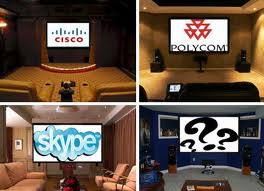Twitter Sucked – Or so I thought…
The first few days I went on Twitter I was hardly impressed, In fact, I thought it just plain stunk. I signed up, followed a few stars and people that I knew, and then I watched the “stream.” My first impression was that it was total non-sense, it was like a social experiment (gone bad) where you could find celebrities promoting, media outlets broadcasting, children chatting, and professionals bantering. Why would anyone waste their time with this garbage?
At this point I didn’t have a following or even a sense of what was happening. The whole thing seemed pointless, and I was totally lost. After a few weeks of watching passively, I came to realize two things. First, I am really bad at Twitter, and second, I now had more questions than answers.
A few of the questions that crossed my mind were…
- What are all of these people doing here?
- Who is reading their tweets?
- Why do some people have so many followers and others so few?
- Is this just a massive waste of time?
- How can I possibly use this to improve our business?
I suppose I shouldn’t have been surprised about my early impressions of Twitter. It was nothing more than curiosity that led me to finally sign up (Almost cynicism). It had reached a point where I couldn’t watch a television show, visit a restaurant, or surf the web without hearing about Twitter, I had to see for myself. My opinion was that Twitter was nothing more than a place for celebrities to say regrettable things, and perhaps some type of popularity contest for the rest of the world. What I believed that I knew for sure was that social media was nothing more than a giant waste of time for a C-Level executive like me working in the B2B space.
Social Media Hype, what Hype?
I often proclaim to be a social media newbie. With still only 6 months on Twitter, I think that is a fair statement. However, I must confess that prior to joining Twitter, I had been on LinkedIn for a period of time, but essentially I used it as nothing more than an electronic rolodex, finding minimal value in that. Beyond that, our company had a Twitter handle (Near Dormant) and a Facebook page (Completely Dormant).
Truth be told, I just thought that Social Media was hype. I saw it as a circus of flying rhetoric with no meaning that served as nothing more than a waste of time for both myself and my organization. I viewed it as a PR/Marketing thing primarily for large B2C companies, and most certainly not a place for a B2B.
Persistence Pays Off
It would have been really easy to have gone dark. Close my account and disappear from Twitter and the hype only to be seen again by real humans, with real needs. No more screaming into a dark cave and hoping that somehow someone would hear me. I wasn’t used to being ignored and that was what Twitter felt like to me.
The caveat that kept me going is that I’m a fierce competitor (A Blessing and a curse). I don’t like to lose at anything. (If you don’t believe me, come watch me play Wii with my kids – Losing is not an option) For me, this empty existence that was Twitter couldn’t be it. There had to be something more and a reason that all of these people were spending so much of their time there. I was determined to figure it out.
Over the next several months I continued exploring the dynamic Twitter landscape. I committed to engaging, connecting, and getting involved with dynamic individuals. I read blogs about success on Twitter, social media etiquette, and more than anything else I paid attention to how others used Twitter to enhance their business and individual brand. It was like a crash course in networking in the digital world. I learned a lot and it paid off!
The Results are In
Fast forward to today and I will proudly tell the C Level community that Social Media is no longer something to consider, it is something that they must engage in. As the face of their respective companies, Social Media aligns in so many ways with that position. Here are a few of those ways.
- Branding – As a C level leader you are responsible for (and often interchangeable with) the branding, image, and awareness of the organization. Social Media provides a conduit to brand both yourself and your organization to a wide audience. The larger you grow the audience, more people aware of your value.
- Networking – As a CEO or other C suite executive, you bring tremendous value to your organization when you build a strong professional network. It is amazing how many CEO’s and other senior executives you can find and connect with on Twitter. CEO to CEO engagement can lead to some tremendous deals, and can move them along quickly. (Tweet me for details)
- Thought Leadership – Executive Management should but often don’t work to establish themselves as thought leaders in their respective fields, communities, and networks. By providing thought inducing content, and establishing your knowledge in your field, you can become visible to thousands (if not more) or potential buyers or word of mouth marketers for your product or service.
- Engagement – Social Media has created a human condition that almost everyone is accessible. If you are seen as an elitist, your brand may suffer. By being accessible, engaging, and humble on Social Media, you can build trust with your audience. I have found most people are more than willing to engage, and those engagements have led to incredibly meaningful business relationships (And a few friendships).
- Mentorship – There are many executives doing a great job of using Twitter for their companies and for their individual brand. I suggest you find a few that you feel are doing a great job and watch their contribution. If you can engage them, perhaps they can mentor you more directly. I had a few great mentors on Twitter that completely changed the experience for me.
Participation – What it’s All About
It is still hard for me to believe that I only joined Twitter less than six months ago. What is even more amazing is that the decision has entirely changed the way I view business and relationships. In the time I have been actively PARTICIPATING on Twitter, I have built countless great relationships, expanded awareness of my organization, our goals, our direction, and what it is that makes us great.
If you are a senior executive still sitting on the Social Media sidelines I have one piece of advice. Social Media will provide a return that is very much in line with what you put into it. Signing up and creating a profile will probably provide no tangible return, and similar to joining a new networking group or trade organization, building relationships often takes time. However, if you participate, and commit to your message and your value (both organization and individual), there is likely an audience willing and ready to help spread your message.
So jump on in and get started. I assure you won’t regret it!


